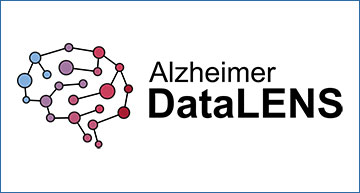Alzheimer’s disease (AD) is a complex and devastating condition that affects millions of people worldwide. Researchers are tirelessly working to understand its underlying mechanisms and find effective treatments. Recent breakthroughs in Alzheimer’s research are increasingly driven by advanced “omics” technologies, which study the roles, relationships, and actions of various types of molecules that make up the cells of an organism. However, the vast and complex nature of these datasets makes it challenging for neuroscientists to access, query, and visualize the information they need.
The Need for a Unified Resource
Despite the availability of numerous omics datasets, there has been no single, easily accessible resource that allows researchers to explore and analyze these datasets in a consistent and user-friendly manner. This gap has made it difficult for scientists to fully leverage the wealth of data available to them.
Enter Alzheimer DataLENS
To address this challenge, researchers at Massachusetts General Hospital have developed Alzheimer DataLENS, a web-based portal designed to make it easier for scientists to browse, query, and visualize public omics datasets related to Alzheimer’s disease. This innovative tool was built using the R Shiny platform, a popular web application framework for data scientists. Alzheimer DataLENS aims to streamline the exploration of transcriptomics (the study of RNA transcripts produced by the genome) and genetics studies of AD conducted on human cohorts.
Architecture overview
Summary of the technology stack used in Alzheimer DataLENS. Primary data is processed by consistent pipelines and stored either in a MongoDB database or as.RDS files. The R Shiny server queries and processes the data to display on the front-end web browser.
Key Features of Alzheimer DataLENS
Alzheimer DataLENS offers several key features that make it a valuable resource for the research community:
- Comprehensive Datasets: The portal currently houses:
- 2 single-nucleus RNA sequencing datasets: These datasets allow researchers to examine gene expression at the level of individual cells.
- Over 30 bulk RNA sequencing datasets: These datasets cover 19 different brain regions from 3 different cohorts, providing a broad view of gene expression changes across the brain.
- 2 genome-wide association studies (GWAS): These studies help identify genetic variants associated with Alzheimer’s disease.
- Uniform Data Processing: To ensure that the findings from different datasets can be easily compared and combined, all datasets in Alzheimer DataLENS were processed through a uniform bioinformatics pipeline. This standardization is crucial for maintaining consistency and reliability across the datasets.
- Interactive Visualizations: Alzheimer DataLENS offers a variety of visualization tools tailored to different types of data:
- Single-nucleus data: Bubble plots, heatmaps, and UMAP plots (a type of dimensionality reduction plot) help researchers visualize gene expression at the single-cell level.
- Bulk expression data: Box plots and heatmaps provide insights into gene expression across larger tissue samples.
- Pathway analysis: Protein-protein interaction network plots illustrate how different proteins interact within the brain.
- GWAS results: Manhattan plots display the significance of genetic variants across the genome.
- Integration with Other Resources: Alzheimer DataLENS links to two additional knowledge resources:
- The AD Progression Atlas: A resource that provides insights into the progression of Alzheimer’s disease.
- The Astrocyte Atlas: A specialized resource focused on astrocytes, a type of glial cell in the brain that plays a crucial role in AD.
Accessibility
One of the most significant advantages of Alzheimer DataLENS is that it is freely accessible to the research community. Researchers can access the portal at https://alzdatalens.partners.org, making it a convenient and powerful tool for advancing our understanding of Alzheimer’s disease.
Alzheimer DataLENS represents a major step forward in Alzheimer’s research. By providing a unified, easy-to-use platform for accessing and visualizing complex omics datasets, it empowers researchers to uncover new insights into the molecular and genetic underpinnings of Alzheimer’s disease. This tool not only facilitates the exploration of existing data but also accelerates the discovery of new biomarkers and therapeutic targets, ultimately bringing us closer to effective treatments for this devastating condition.
Noori A, Jayakumar R, Moturi V, Li Z, Liu R, Serrano-Pozo A, Hyman BT, Das S. (2024) Alzheimer DataLENS: An Open Data Analytics Portal for Alzheimer’s Disease Research. J Alzheimers Dis 99(s2):S397-S407. [article]





